| Skip Navigation Links | |
| Exit Print View | |

|
Oracle Integrated Lights Out Manager (ILOM) 3.0 Supplement for the Sun Fire X2270 M2 Server |
| Skip Navigation Links | |
| Exit Print View | |

|
Oracle Integrated Lights Out Manager (ILOM) 3.0 Supplement for the Sun Fire X2270 M2 Server |
About This Documentation (PDF and HTML)
Overview of the ILOM Supplement
Supported ILOM 3.0 Feature Set
Sun Fire X2270 M2 Server Platform-Specific Features
Communicating With the ILOM and the System Console
Server Back Panel LEDs and Ports
About ILOM SP IP Addresses and the ILOM Interfaces
How to Get the SP IP Address Using the BIOS Setup Utility
How to Get the SP IP Address Using a Serial Connection and the CLI
How to Connect to the Command-Line Interface Using SSH
How to Connect to the ILOM Command-Line Interface Through the SER MGT Port
How to Connect to the ILOM Web Interface
Connecting to the System Console
How to Connect to the Server Locally (Physical Console)
How to Connect to the Serial Console Using the ILOM CLI
ILOM Platform Features for the Sun Fire X2270 M2 Server
Switching Serial Port Output Between SP and Host Console
Running IPMITool from the Host
Updating ILOM Firmware Using the IPMIflash Utility
How to View the Sensors From the System BIOS
BIOS System Event Log Sensor Error List
Using ILOM to Monitor the Host
Determining Current Firmware Versions
Preparing for a Firmware Update
Note - The screen shots presented in this topic are for informational purposes only and might differ slightly from the screens you see.
Before You Begin
The requirements for the JavaRConsole (remote console) system are:
Linux, Windows, or the Oracle Solaris OS is installed.
The system must be connected to a network that has access to the server's Ethernet management port.
Java Runtime Environment (JRE) 1.5 or later is installed.
If the remote console system is running the Solaris OS, volume management must be disabled for the remote console to access the physical floppy and CD/DVD-ROM drives.
If the remote console system is running Windows, Internet Explorer Enhanced Security must be disabled.
The remote console system and ILOM service processor must be set up according to the instructions in the Oracle Integrated Lights Out Manager (ILOM) Web Interface Procedures Guide.

The Security Alert dialog box appears.

The ILOM login screen appears.
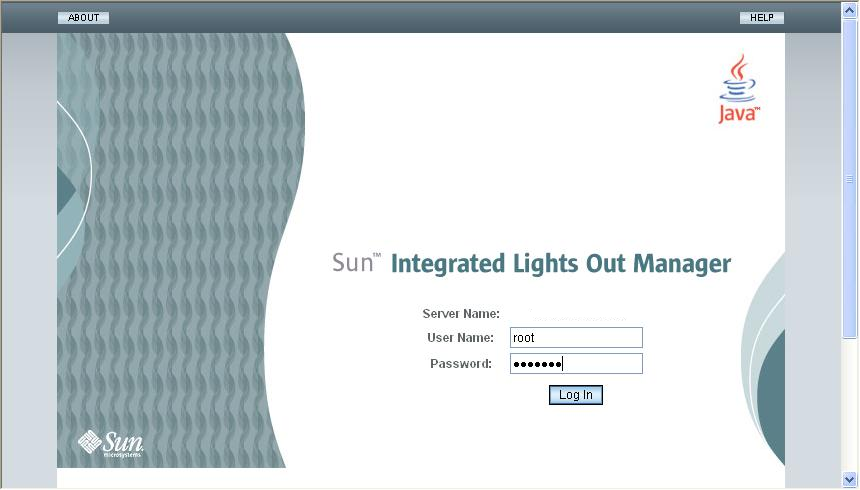
The default user name is root, and default password is changeme.
The ILOM Version Information screen appears.
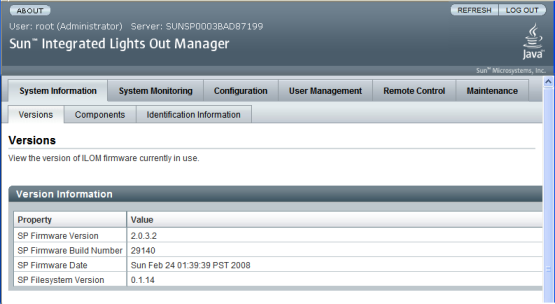
The Launch Redirection screen appears.
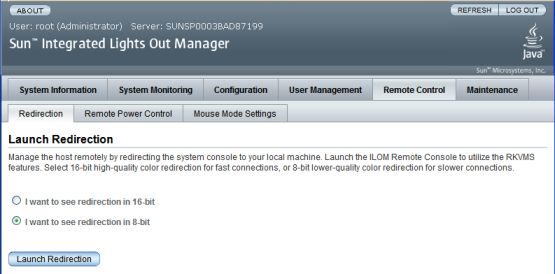
When you use a Windows system for remote console redirection, an additional warning appears after you click Launch Redirection. If the Hostname Mismatch dialog box appears, click Yes.
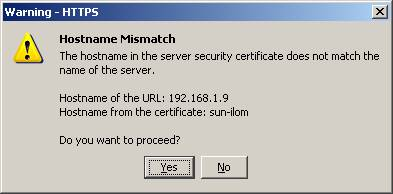
The Remote Control Login dialog box appears.
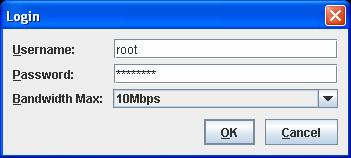
Note - You must have administrator privileges.
The default user name is root, and the default password is changeme.
The JavaRConsole screen appears.
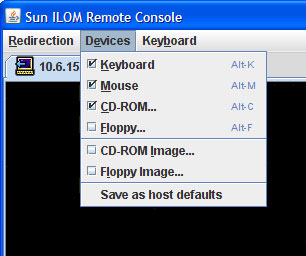
Remote Physical Floppy Disk. Choose Floppy to redirect the server to the physical floppy drive attached to the remote console.
Remote Floppy Image. Choose Floppy Image to redirect the server to the floppy image file located on the remote console.
Remote Physical CD/DVD. Choose CD-ROM to redirect the server to the CD/DVD in the CD/DVD drive attached to the remote console.
Remote CD/DVD Image. Choose CD-ROM Image to redirect the server to the .iso image file located on the remote console.
Note - Using the CD-ROM or CD-ROM Image options to install software on your server significantly increases the time necessary to perform the installation because the content is accessed over the network. The installation duration depends on the network connectivity and traffic.